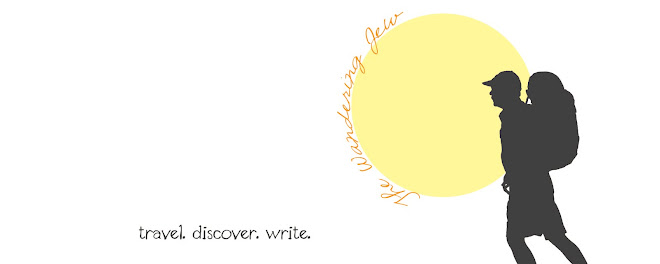
I was feeling the typical stomach-tightening, sweaty-palmed fear as I rode the bus out of Munich on my way to the Dachau concentration camp. I was worried about what I would see. Would I be able to handle it? After all, here I was, walking into a place where so many people of my faith were persecuted, tortured, and ultimately murdered.
Dachau was opened in 1933 as an internment camp for political prisoners. All of the other concentration and extermination camps in Europe were modelled after the very place I stood just yesterday.
Upon arrival, our guide, Alan, gave us the background history of the camp. He told us that the numbers of people who died there were inaccurate, because Jews, Gypsies and old or weak prisoners were not counted in the death toll because they were not considered people. Also, the majority of bodies in the mass graves were not identifiable.
To get into Dachau, students pay €18, which includes transportation, admission, and a guided tour. This struck me as bizarre. Here I am, a Jew, paying to get into a Nazi camp.
First off, we watched a 22 minute documentary, which basically outlined the history and goings-on inside the camp from 1933 to 1945. And then we walked in. We entered through the iron gate, and there were those words: Arbeit macht frei. Work makes you free. The big lie.

Upon walking into Dachau, you come across a huge gravel compound (where roll call was performed every day). To your right is a multi-purpose building, once the maintenance building, jail cells, execution area, and later, a war-crime court. Today, it is a museum. There are various memorials, including a sculpture depicting bodies entwined in barbed wire, honoring the suicides committed at Dachau. There is also a colourful mosaic representing the different groups persecuted here.
On the left are two barracks. The rest were destroyed in the 1960s. I learned that the barracks we walked through were not, in fact, original. They were built as exact replicas of the ones there during the war, but they were not authentic. For me, this took away from the effect somewhat.
After the barracks, we were shown guard towers, and the deep ditch, electric fence, and cement wall, which was the Nazis` surefire way of keeping prisoners in. Also situated here were three memorials: Jewish, Roman Catholic, and Protestant. I found it interesting how the Protestant memorial did not have any right angles. Alan explained that this was to defy the order of the war.

Then we turned the corner and arrived at what can only be described as a "death factory". It involved the disinfecting room, crematorium, corpse holding rooms...and the infamous gas chamber. There is no recorded evidence that the gas chamber at Dachau was ever used, but of course that is not necessarily accurate. It felt absolutely sick to my stomach walking through there.
It was so surreal being in a place where, had I been born in another time and place, I would have been forced into. I feel almost guilty about how lucky I am.
The sight of the gas chamber has really stuck with me. It had a low ceiling, no more than 10 feet high, and even in bright daylight it was dark, save for the small bit of light seeping through the viewing window. This was where the Nazis would stand, and watch the victims die their slow, agonizing death. It was so painful being in that tiny, stuffy room. It was so hard to come to terms with the human atrocities that had occurred right where I was standing.
Before leaving Dachau, I noticed that part of the international memorial included a plaque which read "Never Again" in five different languages. How ironic. It has happened many times since the Holocaust, and it`s happening all over the world today. The only words that come to mind when I try to describe the situation are FUCKED UP.

I`m so glad that I got the opportunity - privilege if you will - to walk through a hands-on display of a horrific part of my religious history. A history which essentially affected everyone. I strongly suggest that everyone visiting Europe visits a concentration camp or Holocaust museum. It doesn`t help us change the world situation if we choose to shelter ourselves in the favorable parts of the places we visit. Sometimes you just have to bite the bullet, and see the good, the bad and the ugly.
Questions? Comments? Criticisms? I`d love to hear them all!
the-wanderingjew@hotmail.com


Bravo, Beck. Thanks for the eyes and voice.
ReplyDeleteLove,
Mom
Evocative; disturbing and moving - you are really honing your craft as a writer. Thank you Becky for stirring us with your words. Love, AJxoxo
ReplyDeleteI loved that piece, Becky. It was very moving and powerful. Keeping up with your great blog. I miss you and am excited to hear all of your other stories as well when you are home.
ReplyDeleteAlicia
You can visit Dachau for free if you go on your own. And if you can find it outside of town. The townspeople would prefer to forget… My tour this Spring was worth the fee, but not necessary for the experience.
ReplyDelete